As the school year comes to a close, I was looking for some ways to entertain motivate my older students while continuing to deliver effective therapy and address their language goals. During a visit to my local Dollar Tree and Target Dollar bin a few weeks ago, I collected some items that I couldn’t resist, in hopes of finding inspiration to use them in my therapy sessions. So here is what I purchased and how I have been using them to keep my students engaged as the weather grows warmer and the remaining school days dwindle!
1. Solar Toys (in particular, these very cool butterfly terrariums!) {{Great for addressing cause and effect}}
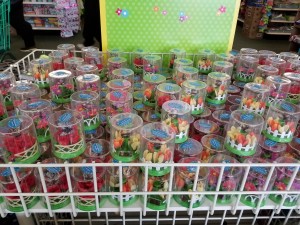
Here is a short video I took of the slew of butterfly terrariums I saw at the dollar store. They look so cool all grouped together!!! (I didn’t buy the entire bin of them, but I was tempted!)
Solar toys are a fun and captivating way to teach kids about the usefulness of solar energy. I think I see a science lesson in the making! (I love when I can incorporate another subject area into my lessons to make it even more meaningful!) Kids can experiment with solar toys under a variety of conditions (i.e. cloudy, sunny) to determine how direct and indirect sunlight affects energy storage. Solar toys teach children about energy collection and energy usage. The more solar energy that is stored, the more power there is.
CAUSE/EFFECT:
Here’s your science lesson— The solar panel collects light and causes movement in a magnet under the flower top, out of sight. The insect also has a magnet glued underneath it which moves with the magnet. The insect is hung with a thin clear filament from the center of the case. The magnetic force between the two magnets is causing them to repel against each other and momentum to build, which creates the back and forth motion of the butterfly “fluttering” above the flowers. Cause—–> energy stored in the solar panel Effect—->movement of the magnet
PREDICTING/INFERRING/SUMMARIZING:
Use the butterfly terrarium to discuss: Why do you think a butterfly might be fluttering over flowers? While it might seem obvious to some of us, many of our students have difficulty putting into words a clear explanation. Most adult butterflies drink nectar from flowers through their tongues (called a proboscis), which functions much like straws. Butterflies taste with their feet. A butterfly has taste sensors on its legs, which inform it about the taste of the plants it stands on. Additionally, butterflies are pollinators, so while they hover above those beautiful garden flowers, they are getting ready to land and pollinate the pollen they have collected on their legs. Have your student do a Google search about the feeding and pollinating habits of butterflies and then put into their own words a summary about what they have learned.
WRITING PROMPT:
Use the butterfly terrarium as a writing prompt. Students can write a descriptive paragraph about butterflies, an imaginative paragraph about a butterfly that could converse with them, an informative paragraph about the life cycle, varieties of butterflies, etc.
One more idea….Have you been using Mystery Doug video clips and writing prompts in your language sessions? If you aren’t familiar, then check out the link and sign up for FREE weekly mini-lessons! Mystery Doug answers questions about a variety of science-related topics. The video clips are only about five minutes long and a fantastic way to address listening, comprehension, inferencing and writing skills. Below is the writing prompt included for the video on butterflies. My student enjoy these informative mini-lessons and so do I!!!!
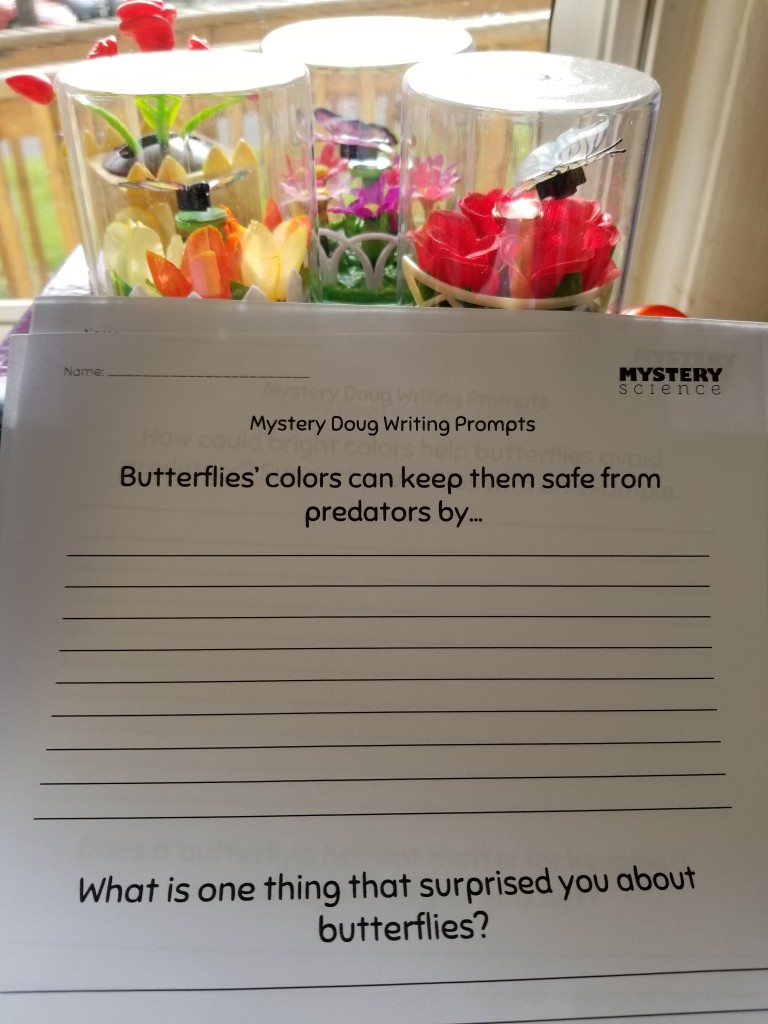
2. Paper Airplanes
Yes, I bought these in the Dollar Tree! They are perfect for addressing direction following, sequencing and problem solving. These came with directions (visual and written). I read the direction to my students to see if they could figure out what they needed to do for each step. If they were unsure, I showed them the visual diagram example. Ask your students to verbally recall the steps. Fold a piece of paper into 6-8 sections and write each of the steps in the proper sequence in each of the sections. We took our airplanes outside for a spin to see who could fly theirs the furthest. Create a writing prompt about an adventure your paper airplane went on. Where did it visit? What did it see and do? Did it have a conflict along the way? Did it return home to you safely? So many great language opportunities! Have you seen my blog post on paper folding activities? Be sure to check it out for some more fun and motivating ideas to use in your speech and language sessions!

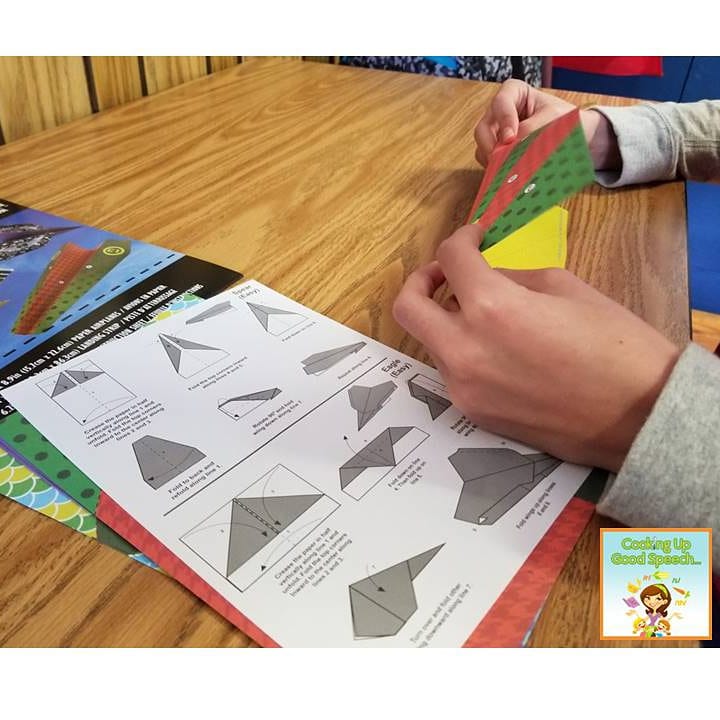
3. Are you familiar with these??? I found Expanding Magic Towels in the dollar store and had to have them! Place the towel in a bowl of warm water and let it soak. Make/write predictions : What will happen as it continues to sit in the water? How long will it take to expand? What is causing it to stay compressed? Why is the water helping it to open up? What will it look like when it’s done? Write about the character or scene that you see once the towel has completely unraveled. Although this is a relatively simple activity, there are many language opportunities, plus they are cheap and you can let your students take them home as an end of year gift!
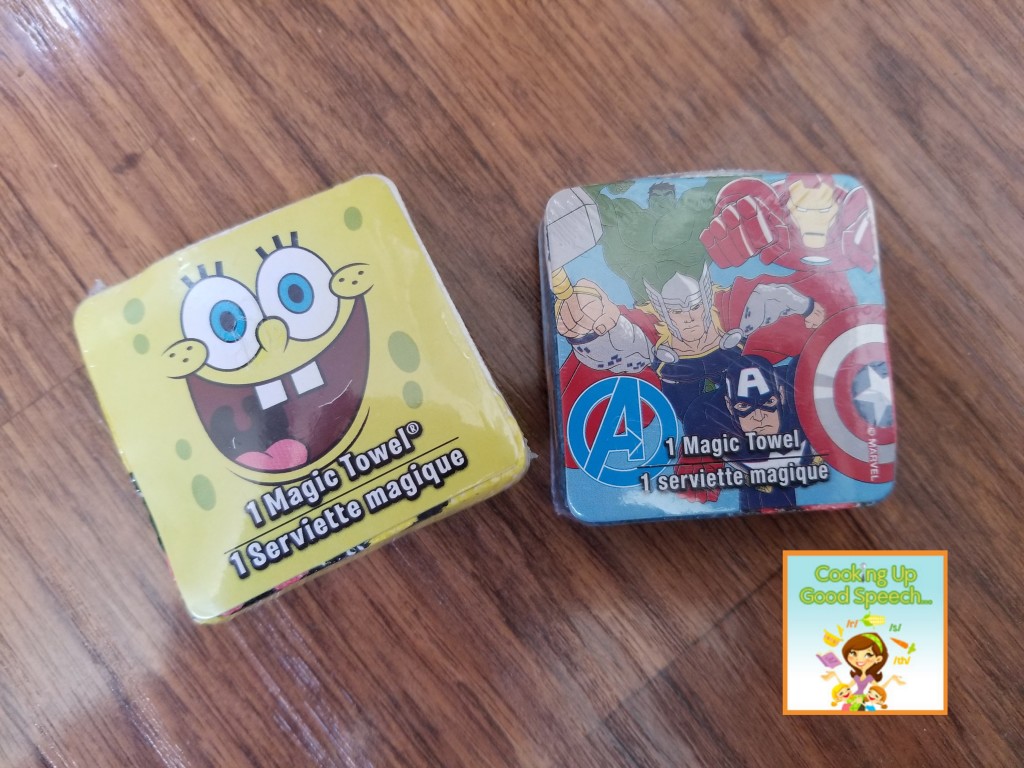
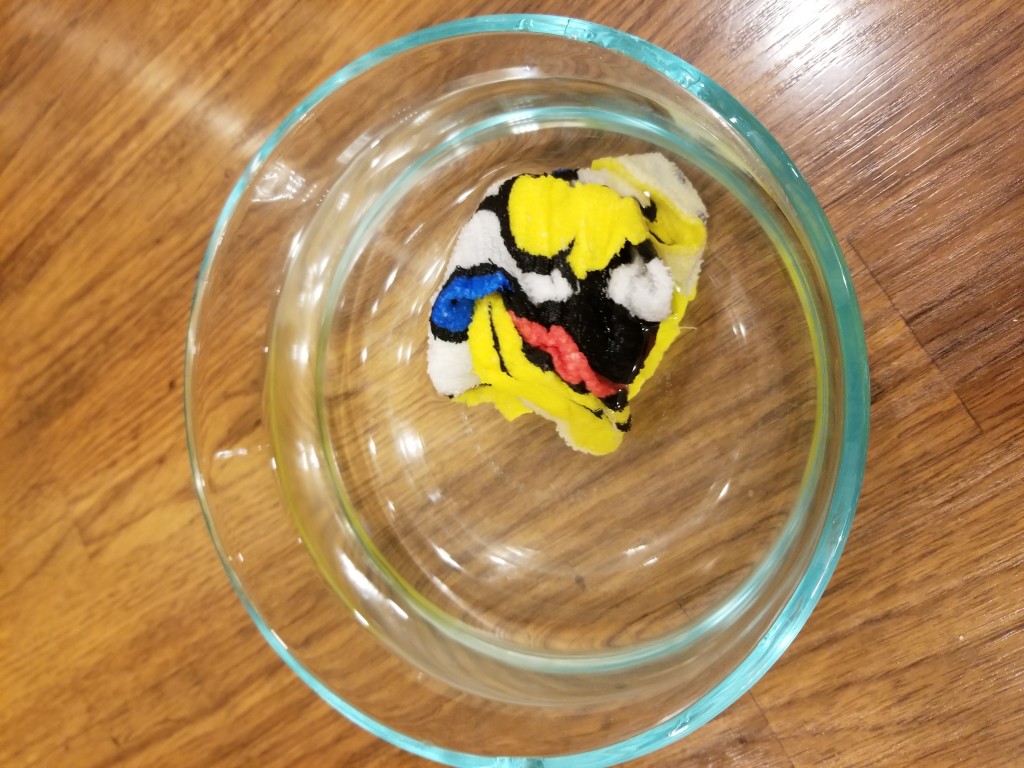
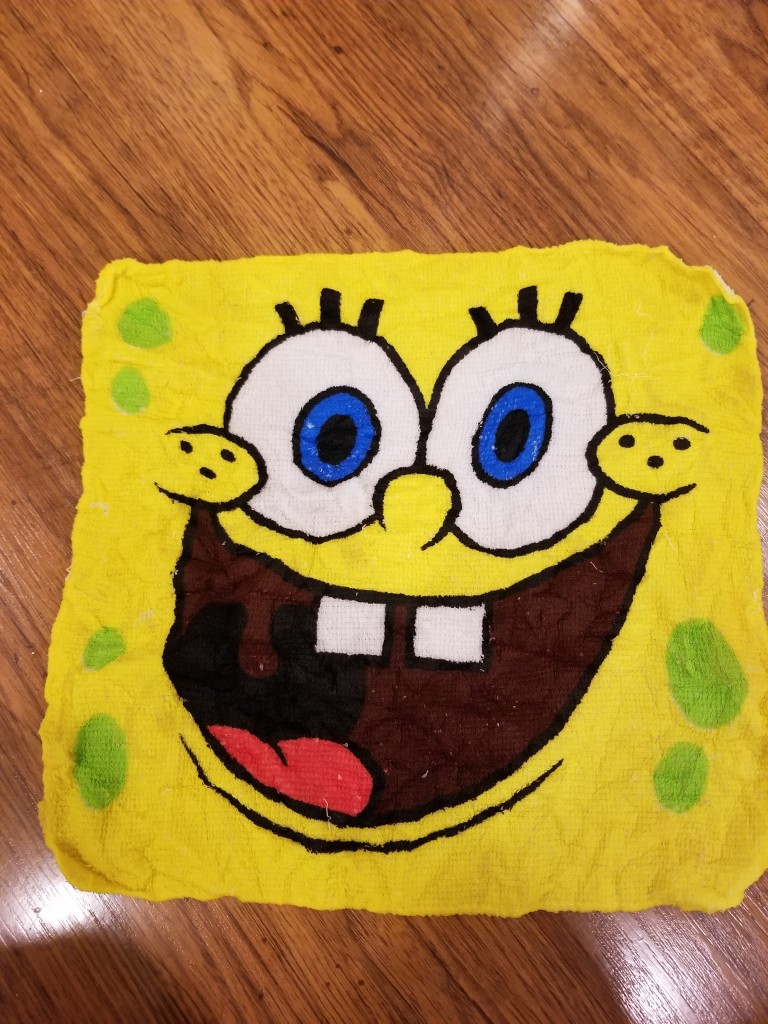
4. SPEECH BUBBLES!
SLPs are experts in ways to use speech/thought bubbles! If we come across them in our travels, we immediately snatch them up and find ways to use them in our therapy sessions. If social skills/conversation skills are being addressed with students on your caseload, then you might be going through a pack, stack or pile of these pretty quickly! I found these in the Dollar Tree…..and the set of sticky notes below is from the Target Dollar bin. Speech and thought bubbles are excellent visual strategies for teaching conversational turn taking, perspective taking, using one’s social filter….the social skills targets goes on….
As the school year comes to a close, many of your student may have been exposed to a variety of activities involving these visuals, so why not give this a try—give the bubbles to your students and ask them to decide how to use them in the session. Let them make the rules and get involved in creating the lessons/game. What a great culminating activity and indicator of what they learned about social skills at the end of the school year!

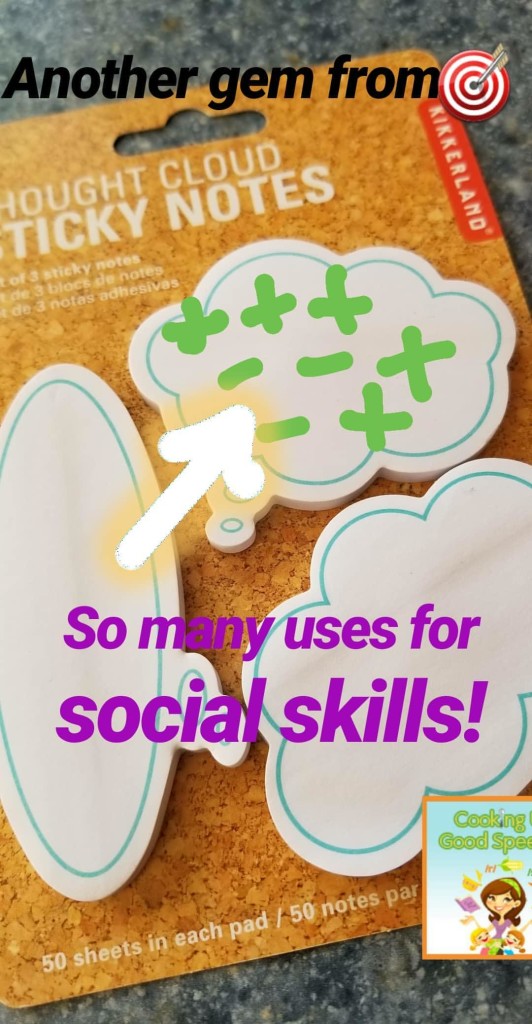
One more thing……not from the dollar store! Before you all head off for a few weeks of rest and relaxation, be sure to check out this summer-themed freebie from my TpT store! It addresses open-ended/“WH” questions geared toward middle and high school students with an “end-of-the-school year” theme!
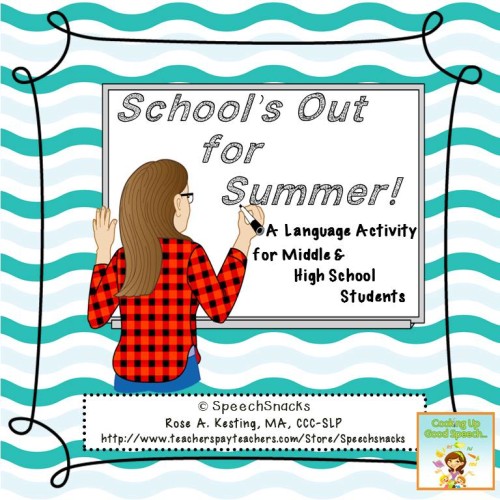
Activities includes:
•8 question cards/scenarios
•8 speech and thought bubbles to fill in and/or discuss
•12 “Summer Suggestions” cards and blank “To Do” list to help keep your tweens and teens busy and boredom-free all summer long! Use these cards as a discussion exercise or challenge them to create a summer to-do list (including some of these ideas.) You can ask them to be prepared to talk about the “summer suggestion” that they followed through with when they return.
This freebie activity can be used to target many speech and language skills including: answering questions, naming tasks, good sentence structure, social language/conversation skills, fluency and articulation. Enjoy! Have a great summer!!!












Leave a Reply